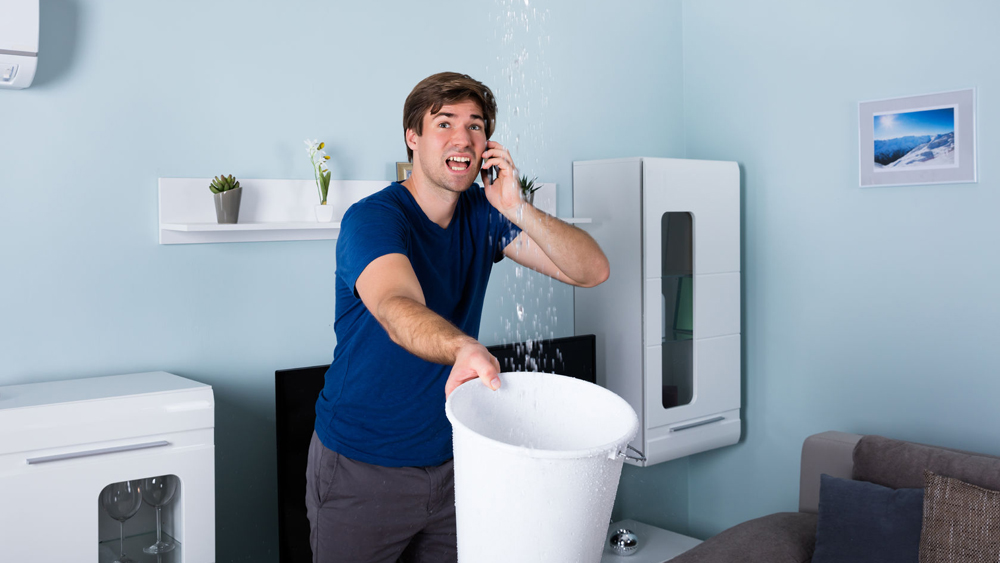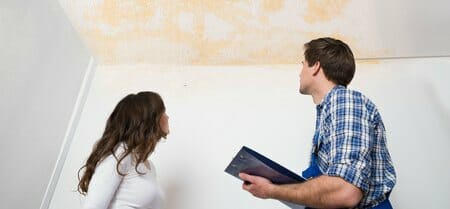Identify A Half-Dozen of the Most Triggers for Water Leaks Within Your Home
Identify A Half-Dozen of the Most Triggers for Water Leaks Within Your Home
Blog Article
How do you actually feel when it comes to Common Water Leaks In House?

Leaks not only trigger waste of water however can also trigger unnecessary damage to your house as well as promote unwanted natural development. Unfortunately, water leaks might go unnoticed because a lot of the pipework in our residence is hidden. By recognizing and looking for day-to-day scenarios that trigger leaks, you can safeguard your house from future leaks and unnecessary damage. Today, we will look at 6 leak causes that may be creating your pipelines to trickle.
Trespassing origins
A lot of water leaks start outside your house instead of inside it. If you discover an abrupt decline in water pressure, state in your faucet, take time to go out and analyze your yard. You could discover damp spots or sinkholes in your yard, which may mean that tree origins are invading water lines creating water to seep out. You can have your plumber look for intrusion, specifically if you have trees or bushes near your residential property.
Corroded water supply
As time goes by, your plumbing system ages and corrosion such as corrosion might begin eating away the pipelines. This might be the root cause of discoloration or warping on your pipes. This asks for an assessment with your plumber right away. If our plumbing system is old, consider changing the pipelines because they go to a greater risk of rust than the newer designs.
Faulty Pipe Joints
The factor at which your pipelines attach is frequently the weakest link in the waterline. Pipe joints can weaken over time, causing water leaks. The bulk of pipe joints are not easily visible. If you have noisy pipes that make ticking or banging noises, particularly when the warm water is switched on, your pipeline joints are most likely under a great deal of stress. It is suggested to have your plumber check your system yearly.
Instant temperature level modifications.
Extreme temperature changes in our pipes can cause them to expand and acquire suddenly. This growth and contraction may cause cracks in the pipes, specifically if the temperature are below freezing. It would certainly be best if you kept an eye on how your plumbing works. The visibility of the formerly stated conditions regularly suggests a high risk.
Poor Water Connectors
At times, a leakage can be brought on by loosened hoses as well as pipelines that provide your home appliances. Generally, changing is what causes the loose water Connections. You could locate in the case of a washing equipment, a hose pipe might spring a leak because of drinking during the spin cycle. In case of a water connections leak, you may notice water running straight from the supply line or pools around your home appliances.
Blocked Drains
Blocked drains may be bothersome as well as inconveniencing, however they can in some cases wind up triggering an overflow leading to rupture pipes. Maintain removing any products that might decrease your drains pipes that could clog them to stay clear of such hassles.
All the above are causes of leakages but not all water leakages result from plumbing leakages; some leaks may originate from roofing system leakages. All leakages should be repaired instantly to stay clear of water damages.
Leakages not just cause waste of water but can also cause unnecessary damages to your residence and promote unwanted organic growth. By looking and also understanding for everyday situations that trigger leakages, you can shield your residence from future leaks and unnecessary damage. Today, we will look at six leak causes that might be creating your pipelines to trickle.
At times, a leakage can be created by loose hoses as well as pipelines that provide your home appliances. In situation of a water connections leak, you may discover water running directly from the supply line or puddles around your home appliances.
How To Check For Water Leak In Your Home
How To Check for Leaks
The average household's leaks can account for nearly 10,000 gallons of water wasted every year and ten percent of homes have leaks that waste 90 gallons or more per day. Common types of leaks found in the home are worn toilet flappers, dripping faucets, and other leaking valves. These types of leaks are often easy to fix, requiring only a few tools and hardware that can pay for themselves in water savings. Fixing easily corrected household water leaks can save homeowners about 10 percent on their water bills.
To check for leaks in your home, you first need to determine whether you're wasting water and then identify the source of the leak. Here are some tips for finding leaks:
Take a look at your water usage during a colder month, such as January or February. If a family of four exceeds 12,000 gallons per month, there are serious leaks.
Check your water meter before and after a two-hour period when no water is being used. If the meter changes at all, you probably have a leak.
Identify toilet leaks by placing a drop of food coloring in the toilet tank. If any color shows up in the bowl after 10 minutes, you have a leak. (Be sure to flush immediately after the experiment to avoid staining the tank.)
Examine faucet gaskets and pipe fittings for any water on the outside of the pipe to check for surface leaks.
Undetected water leaks can happen without the home or business owner even realizing. If you suspect a water leak, but not able to find the source. It is time to contact a professional water leak detection service, The Leak Doctor.
How To Find a Water Leak In Your Home
https://www.leakdoctor.com/blog/How-To-Check-For-Water-Leak-In-Your-Home_AE197.html

We had been guided to that report on Top Causes of Home Water Leaks through an acquaintance on another blog. Appreciated our article? Please share it. Let others locate it. Many thanks for going through it.
Effective solutions await. Report this page